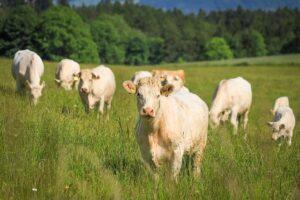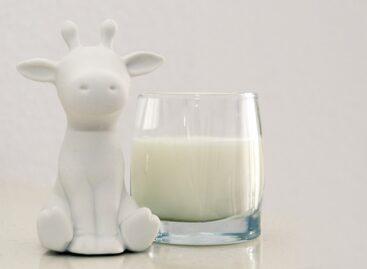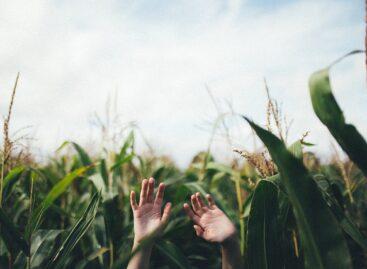Livestock farming is not responsible for the decline in global drinking water supplies
Another false claim is spreading in the European public discourse regarding animal breeding. While the representatives of the anti-livestock narrative often claim that the sector threatens the public’s drinking water supplies, the facts say otherwise. According to research based on objective indicators, a significant part of the water demand of animal husbandry is provided by “green water”, i.e. precipitation. The National Chamber of Agrarian Economy (NAK) sees it as a priority task to dispel misconceptions surrounding animal husbandry, animal husbandry and animal product production and to present the true situation of the sector, as well as its role in the economy, society and the ecosystem.

(Photo: Pixabay)
While from a social point of view, food and drinking water security has become a strategic issue all over the world, the adverse effects of climate change present new and new challenges to farmers. Those active in livestock breeding are burdened with several burdens at the same time. In addition to having to comply with new regulations for climate and environmental protection, animal health and welfare, the sector is often the focus of gender-based attacks. In recent months, the need for drinking water for animal husbandry has been brought up more and more frequently in the European public discourse, and in the anti-animal husbandry narrative, it is stated in many cases that animal husbandry also endangers the human drinking water supply. The NAK considers it a priority task to dispel misconceptions surrounding animal breeding, keeping and animal product production and, relying on authentic sources, to present the true place and role of the sector in the economy and society, thereby offering a different perspective to both the population and the for decision makers.
It is an indisputable fact that access to clean and safe drinking water is a fundamental right of every human being, drinking water is a vital element of life
Water is therefore a precious resource that must be conserved by all sectors of the economy, including agriculture and livestock. It is often said that 15,000 liters of water are needed to produce 1 kg of beef. However, this is typically a shocking statement that looks good on the front page of newspapers, however, it has little to do with scientifically supported facts and data. Objective indicators are needed to assess the actual water consumption of each sector. For example, the “water footprint”, an indicator of freshwater use, which is not only the consumer it examines the producer’s direct as well as indirect water use. It actually contains three types of water sources: blue water (water consumed by animals from surface or underground sources and irrigation), gray water (used water from wastewater treatment and recycling), and green water (precipitation). Based on this methodology, it can be said that a significant part of the average water consumption related to animal husbandry is green water, i.e. precipitation, which seeps into the soil and is evaporated by the plants and returns to the water cycle. So if green water is taken out of the calculation, according to the researchers, 550-700 liters of water are needed to produce 1 kg of beef on a global level, of which only 50 liters is blue water, according to data from the French National Agricultural Research Institute (INRAE).
So if precipitation (green water) is taken out of the calculation, scientists estimate that animal agriculture uses only 8 percent of the global freshwater supply
When considering gray water in addition to blue, which can compete with freshwater consumption, livestock production is estimated to use 13 percent of global water supplies, much of it through intensive animal feed. Livestock production and water scarcity should be assessed at the local level, but there is no evidence that the presence of livestock production is associated with the risk of developing water scarcity. At the same time, better management practices can help reduce the ecological footprint of animal husbandry. In Europe, there is limited scope for improving the direct water consumption of animal husbandry, as the systems are already well optimized. The higher the water content of the feed, the less drinking water the animals need. Increasing the proportion of fresh grass or silage in the feed therefore reduces drinking water intake. Animal husbandry can also have a positive effect on water resources, for example when we graze marshy areas instead of draining them. It is worth comparing the amount of water used for animal products with the production of alternative products that are so fashionable today. According to a research published in 2019, it takes 8 liters of water to produce one liter of cow’s milk, compared to “almond milk”, which requires 158 liters of water to produce. According to a previous study, while the “water footprint” of livestock production is 93% green water, a plant-based alternative such as a soyburger accounts for 69 percent of the water footprint of green water, with the remainder being blue and gray water, which is used for residential drinking water supplies. has a greater effect.
NAK
Related news
The Ministry of Agriculture is helping dairy farmers with a new tender
🎧 Hallgasd a cikket: Lejátszás Szünet Folytatás Leállítás Nyelv: Auto…
Read more >AM: Tax and administrative burdens for farmers to be reduced from January 1
🎧 Hallgasd a cikket: Lejátszás Szünet Folytatás Leállítás Nyelv: Auto…
Read more >The Ministry of Agriculture supports farmers’ awareness with as many tools as possible in 2026
🎧 Hallgasd a cikket: Lejátszás Szünet Folytatás Leállítás Nyelv: Auto…
Read more >Related news
Fidelity Kitekintés 2026: Ne becsüljük alá az inflációt!
🎧 Hallgasd a cikket: Lejátszás Szünet Folytatás Leállítás Nyelv: Auto…
Read more >Company Trend 2025 – domestic businesses under strong pressure, in a negative trend
🎧 Hallgasd a cikket: Lejátszás Szünet Folytatás Leállítás Nyelv: Auto…
Read more >Surprising ordering statistics: foodora sampled the ordering habits of Hungarians in 2025
🎧 Hallgasd a cikket: Lejátszás Szünet Folytatás Leállítás Nyelv: Auto…
Read more >







